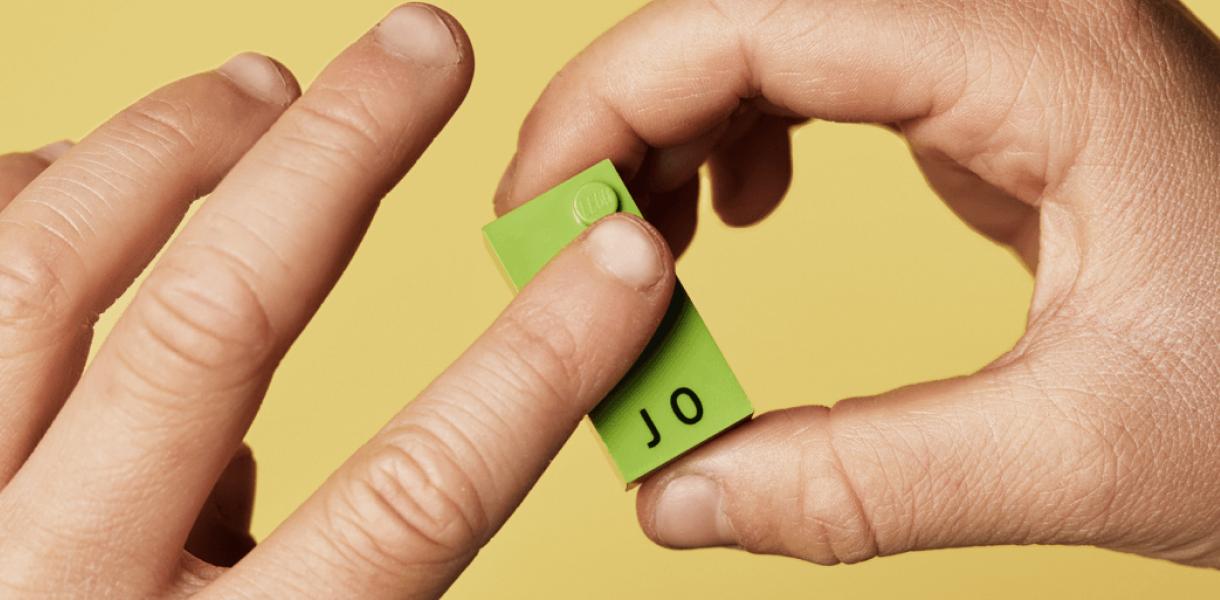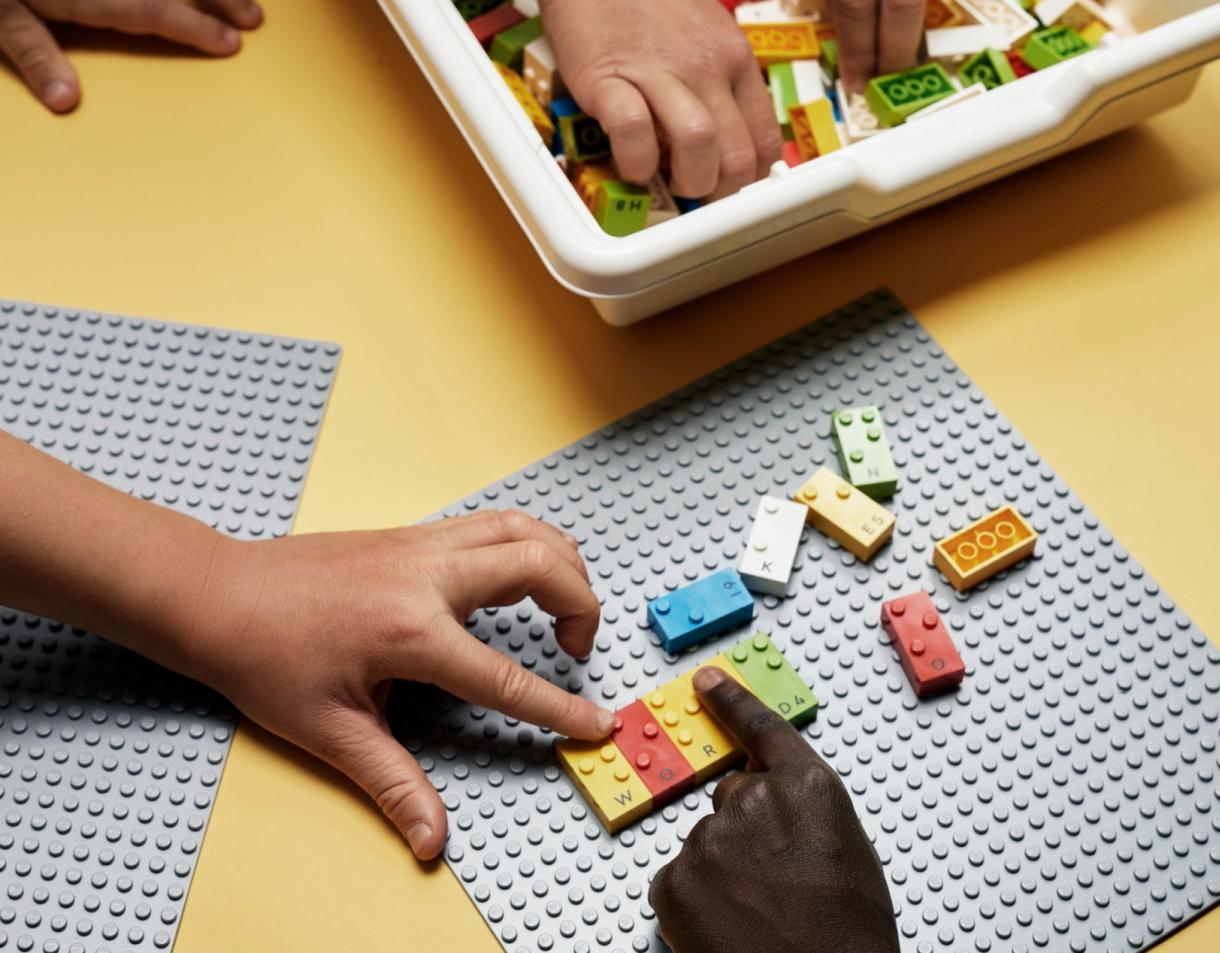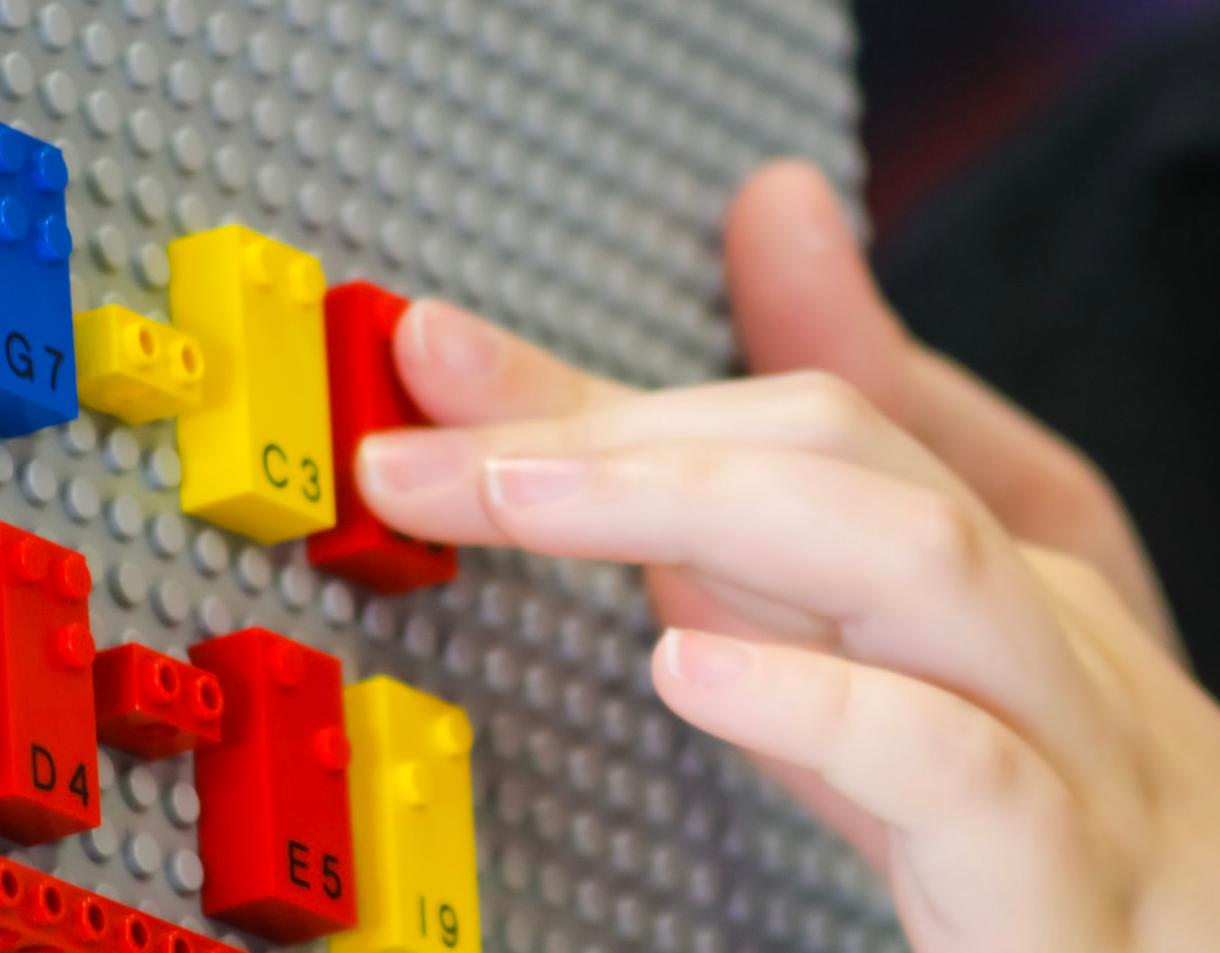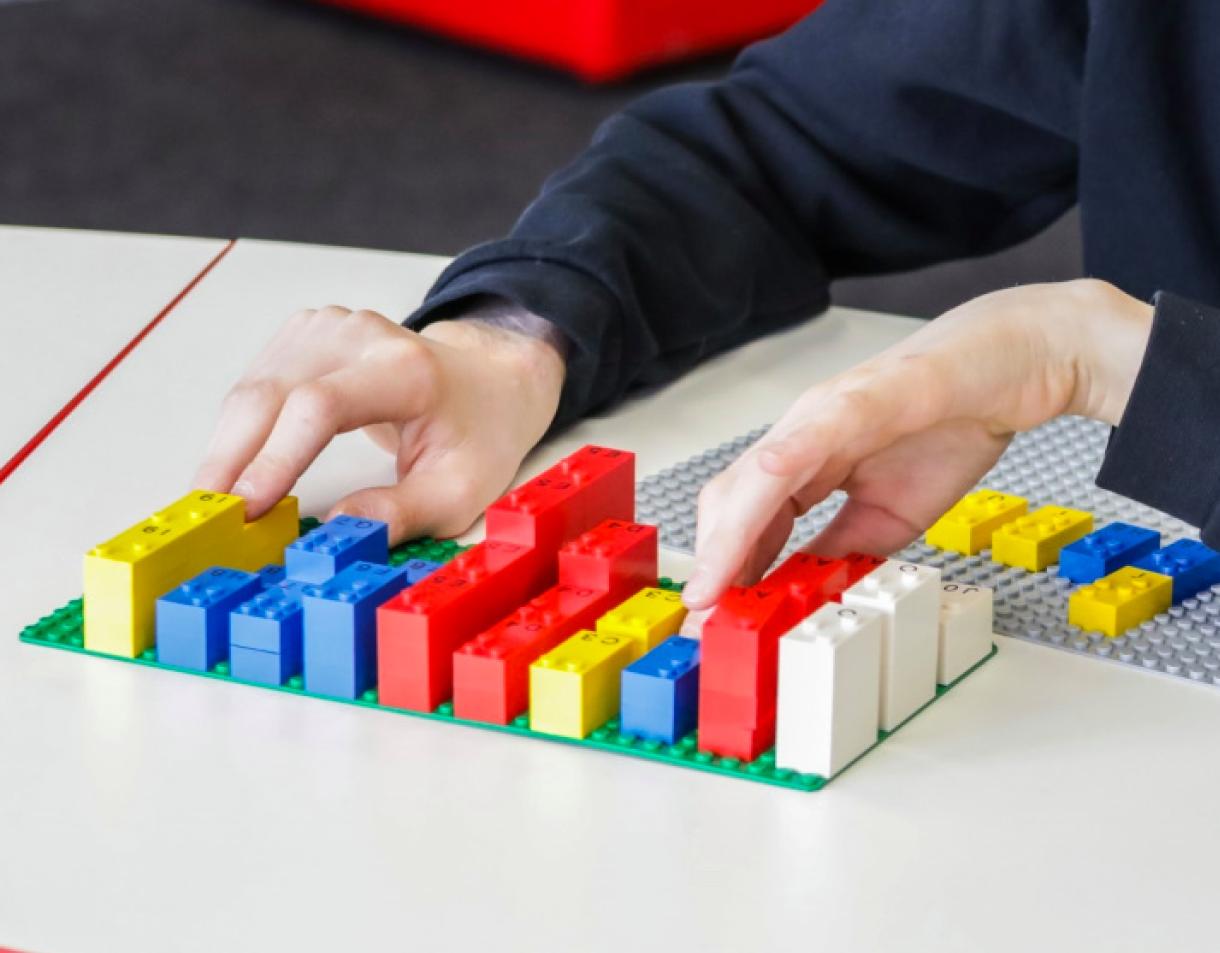What’s the design in a nutshell?
LEGO® play that teaches blind and visually impaired children Braille while fostering play alongside their sighted peers
Why is it needed?
LEGO® play dates back to the ’30s, an iconic toy enjoyed by many generations across the world, enabling us to build and create with no limits to the imagination. LEGO® play has given a wide range of possibilities and development options to millions of children worldwide, and now with some moderation to our most famous brick - the 2x4 - it now also represents a learning tool for Braille. Children associate LEGO® play with something fun. When mixing play and Braille teaching, it becomes a safe space for children to test and learn, to fail and progress, to build their confidence all whilst having fun.
It’s also been observed that with thousands of audiobooks and computer programmes on the market today, fewer young people are learning Braille. Yet, individuals with blindness or impaired vision all over the world rely on Braille to work, study and enjoy their daily lives to the fullest.
How does it work?
Each brick in the LEGO Braille Bricks toolkit retains its iconic form, but unlike a regular LEGO® brick, the studs are arranged to correspond to numbers and letters in the Braille alphabet. Each brick shows the printed version of the symbol or letter, allowing sighted and blind children to play and learn together, equally.
The new bricks were developed and tested with the help of organisations from the blind community across several countries. As Braille alphabets differ from country to country, each toolkit is language-specific but the methodology based on ‘Learning through Play’ is the same although translated and localised.
"This ingenious combination of features opens up a whole new world of playful learning."
How does it improve life?
This ingenious combination of features opens up a whole new world of playful learning that teaches children Braille in an enjoyable and tactile environment. The LEGO Braille Bricks introduces a play-based method to learning Braille and a breadth of skills for inclusive education. This enables visually impaired children to engage with sighted classmates in a fun and interactive way.
What’s the impact to date or projected impact?
The LEGO Foundation has teamed up with blind associations to develop, test and launch the Braille Bricks - an entirely not-for-profit project. Now, they’ve been launched in 20 countries to select institutions, schools and services catering to the education of blind and visually impaired children.
The foundation is planning extensive impact research but initial findings show great interest from practitioners, who find the concept is able to easily engage and motivate visually impaired children.








